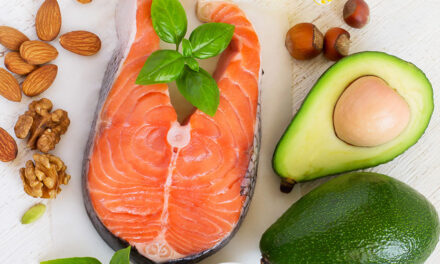Picture this: Hungry for an afternoon snack, you make your way toward the pantry. Craving Halloween candy, you reach for a wrapped piece of chocolatey goodness and flip it over to read the Nutrition Facts label…but why? Out of habit? Guilt? Curiosity? In an effort to make an informed or healthier choice?
You may be surprised to know that nutrition information was not always required on packaged foods and beverages prior to 1990. The U.S. Nutrition Facts label first appeared in 1994 and was revised in 2016 and 2020. In November 1990, the Nutrition Labeling and Education Act (NLEA) was signed into law, marking the culmination of a groundbreaking effort to provide information on food labels to help consumers make better choices and encourage food companies to produce healthier food. Prior to the NLEA, mandatory information on packaged foods was limited, with nutrition information required only on foods making a nutrition claim or those fortified with vitamins, minerals, or protein.
After working for years as a nutrition professional, I’ve come to learn that the Nutrition Facts label is frightening for many. When seeking out a Nutrition Facts label to validate a food choice, it fosters disconnection from our body, giving power over to numbers or ingredients. Like dominos, over-consideration of nutrition facts labels leads to obsessive food thoughts and potential restriction, ultimately setting the stage for binging or overeating later.
Though at times, nutrition labels serve as useful tools, the most common pitfalls for our clients include calories, portion size, and added sugars. Let’s break those down so the nutrition label becomes an empowering source of information rather than a scary weapon.
Calories
Calories measure the energy found in food. In some ways, intentionally seeking out lower calorie options in our food is like going to the gas station for just one gallon of gas. Not only does calorie counting override our bodies’ innate ability to regulate our energy intake, but it’s also tedious and largely inaccurate. This may come as a surprise, but the FDA allows for the calories printed on the facts label to be 20% under or over the actual caloric content of the food. Meaning your 100-calorie snack pack could technically contain 80, 100, or 120 calories…or anything in between.
Calorie counting isn’t an exact science. It turns out these numbers aren’t as black-and-white as many food rules can be. Bodies are not machines that use the same amount of fuel daily. No equation will ever be able to tell you the exact calories a person needs in a day. Calorie needs vary according to activity level (not just workouts, but activities of daily life), hormone levels, emotional state, environment, stress levels, and more.
Serving Sizes
Serving sizes are tools, not rules. Without them, producing, packaging, and marketing food items would be incredibly difficult. Data collected from federal food surveys, like NHANES What We Eat In America, analyzes the average amount of a food item that is consumed at one time by all Americans in order to produce a serving size. In recent years, the new Nutrition Facts labels better reflect realistic portion sizes (because who drinks only 16 ounces of a 20-ounce soda?). It’s still important to watch out for portion distortion. Portion distortion occurs when…
- We look to others’ plates to determine the amount we will eat.
- Distraction or busyness takes over mindfulness or intention.
- We diet or count calories or macros.
The serving size listed on the Nutrition Facts label may not be appropriate for you, and that’s okay! For support toward reconnecting with hunger, fullness, and satisfaction (the best guides toward appropriate portion size), consider reaching out to the Registered Dietitians at Memphis Nutrition Group.
Added Sugar
Found under the carbohydrate section of the Nutrition Facts label, it’s important to be aware of rather than alarmed by added sugars. Remember that each time we eat a source of carbohydrate, whether it’s fruit or a fruit snack, our body recognizes it as fuel and breaks it down to sugar, which is then absorbed into the bloodstream, traveling throughout the body to fuel cells.
Added sugars sweeten food and/or help the baking process. Going sugar-free complicates our body’s natural predisposition to use carbohydrates without any real evidence-proven benefits. The goal is not to eliminate added sugar from a diet, but rather maintain a balance. Every healthy diet has room for added sugars. The general recommendation is to enjoy up to 10% of our daily energy intake from added sugars, providing ample room for Halloween candy or a flavored coffee. Added sugars aren’t empty; in fact, they’re rich in enjoyment, pleasure, and fun.
Remember, cravings are like itches: They come and go with our intentional response. So as you find yourself reaching for that yummy Halloween candy, don’t be afraid to look away from the Nutrition Facts label and savor it, knowing you’re focusing on fostering a nourishing and satisfying relationship with food.
Caroline Pruente, MS, RDN, LDN is a nutrition therapist and Registered Dietitian at Memphis Nutrition Group. Memphis Nutrition Group believes in a non-diet approach that promotes overall health and optimal performance without compromising the enjoyment of food. For more information call Memphis Nutrition Group at 901.343.6146 or visit MemphisNutritionGroup.com.










